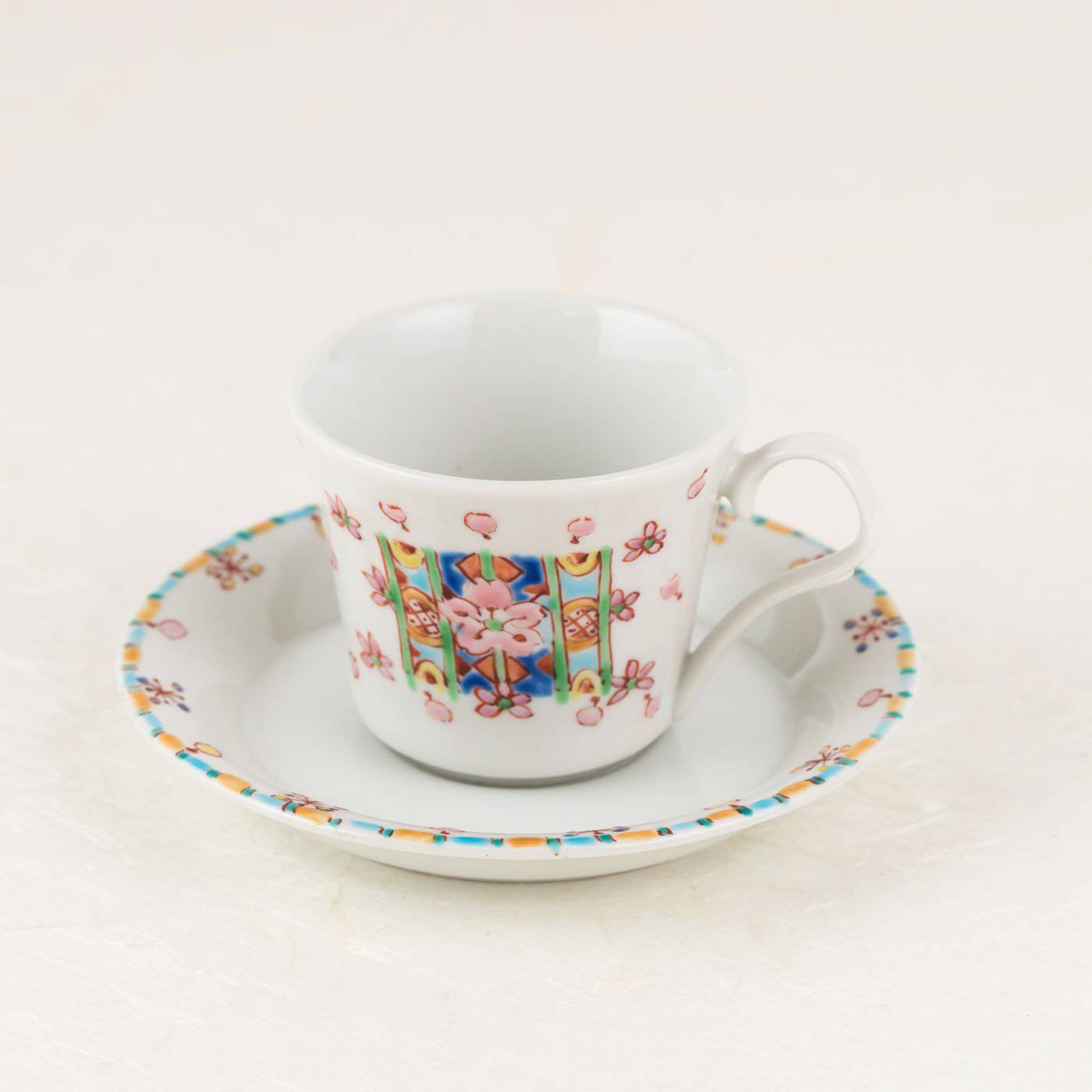
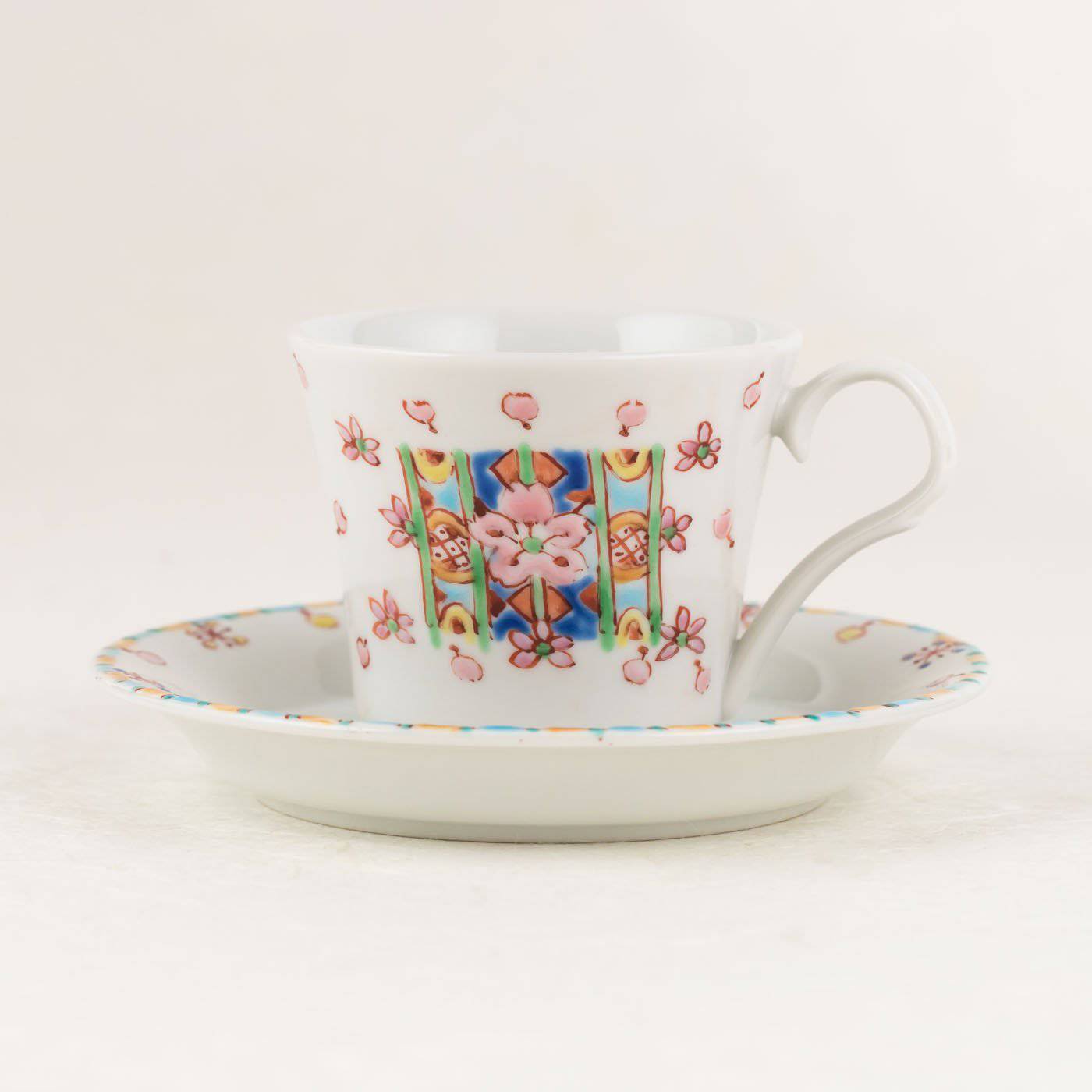
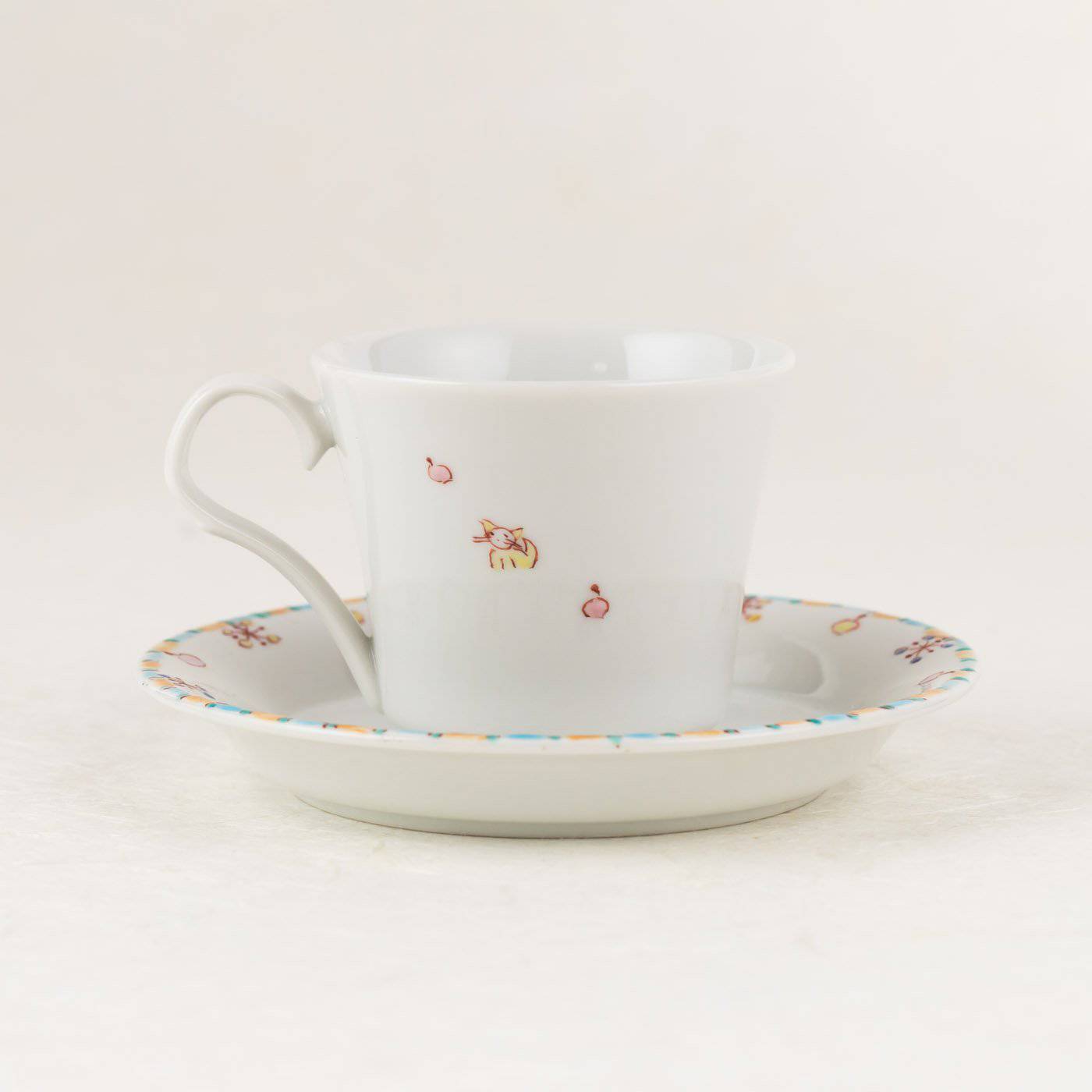

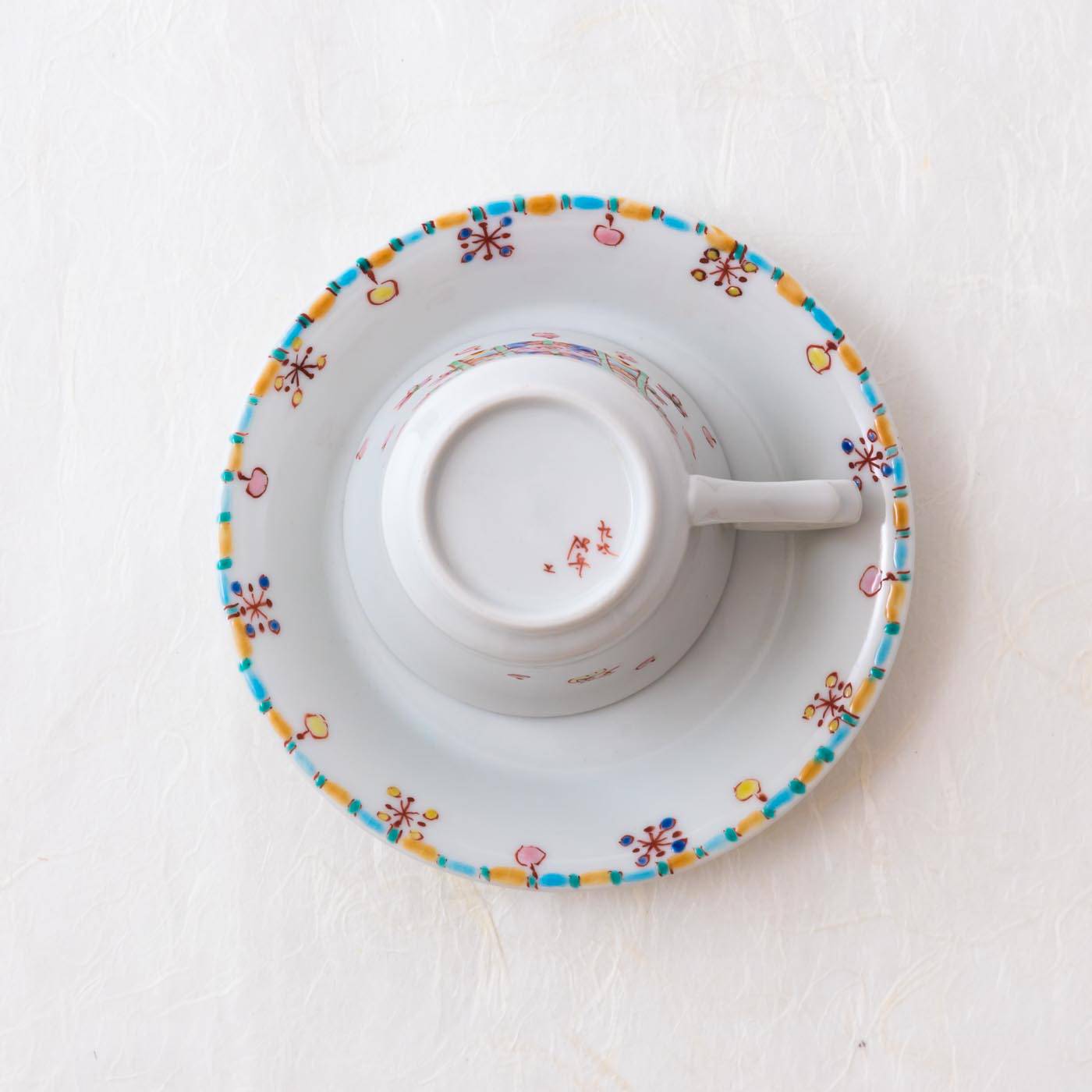
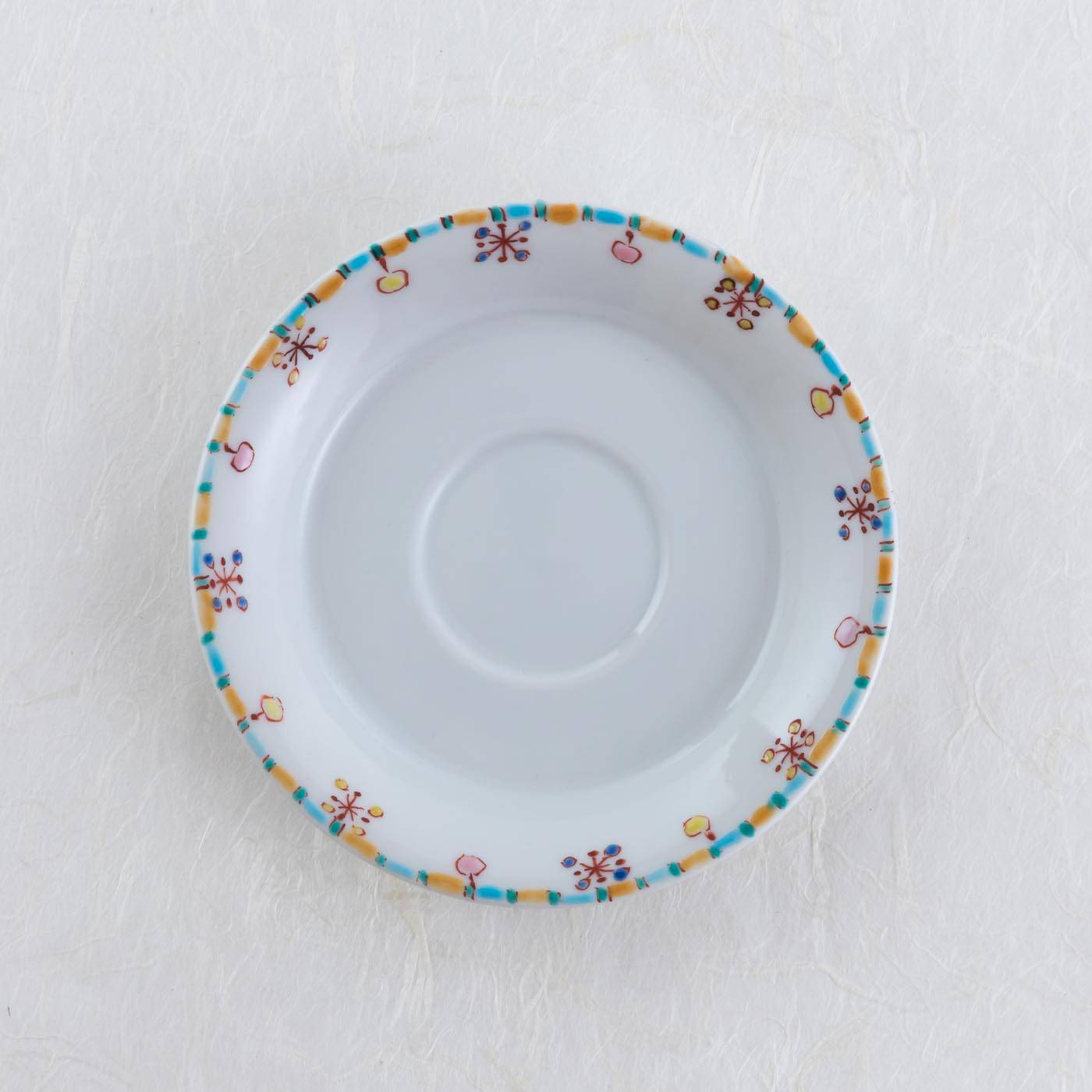
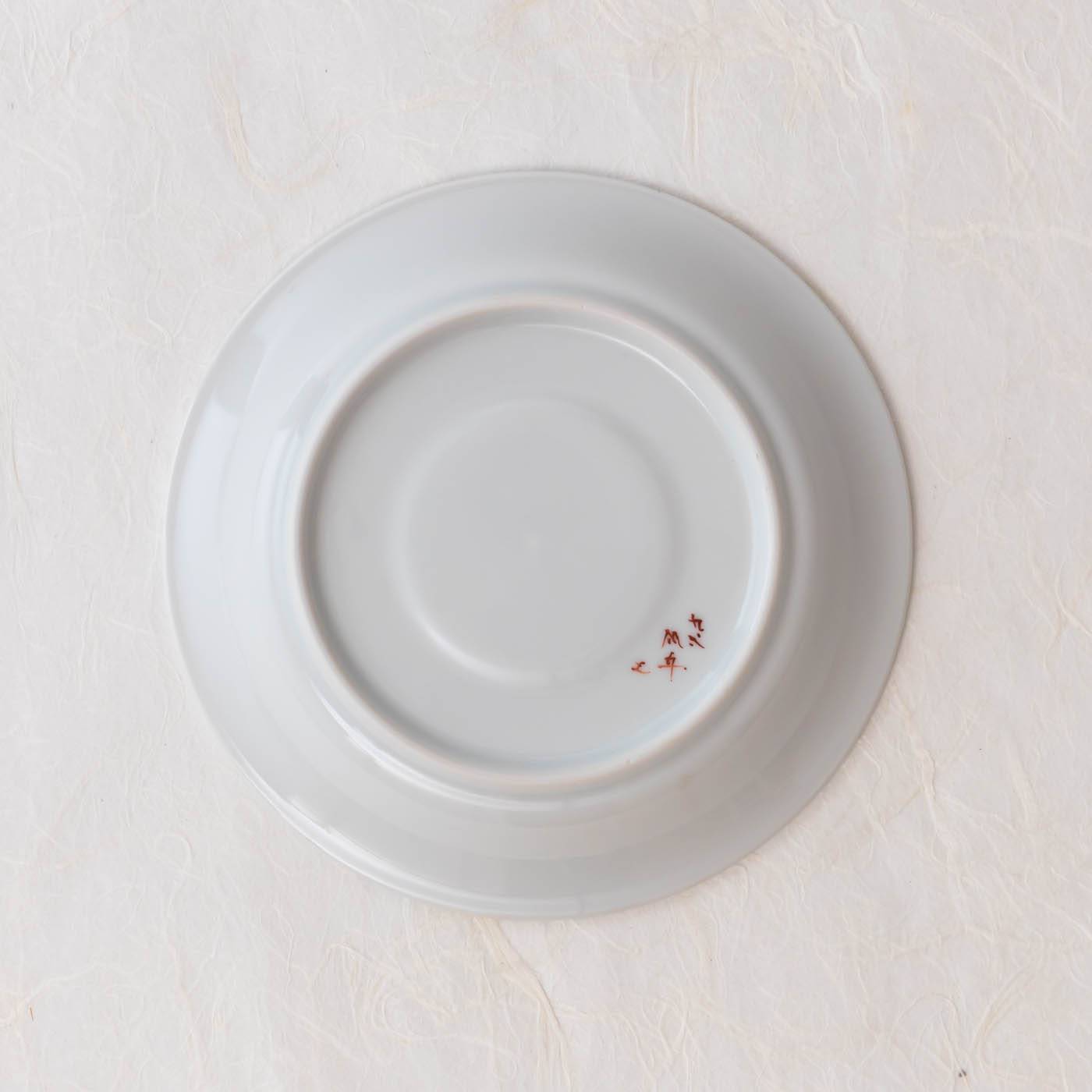
Cherry Blossom Cup and Saucer
Estimated Shipping Widget will be displayed here!
This coffee cup design features a delicate sakura pattern in soft colors. In the back of the cup, there is a tiny cat looking at the falling petals.
The painted areas have a slightly raised texture, a characteristic of Kutani ware, which is traditionally hand-painted using Japanese coloring pigments and a brush.
Pour your favorite coffee into the cup. Your usual coffee time will turn into a wonderful experience with this special cup and saucer.
DETAILS
| Quantity | 1 cup and 1 plate |
| Size | 7.9 cm (3.1 in) x 6.5 cm (2.6 in) |
| Material | Porcelain |
| Microwave | Yes |
| Dishwasher | Yes |
Maker / Brand
Designed and painted by a father, mother, and daughter team, the works of Ginshu Kiln bring a creative new feel to Kutani ware design. Their gentle atmosphere and enchanting colors will take you to a dreamland of delicate artwork. Each detailed brushstroke expresses Ginshu Kiln's sincere wish for their customers to truly enjoy their tableware. The first generation kiln master, Bunkichi, is considered a master Kutani ware craftsperson.
Ginshu Kiln's traditional Kutani coloring and refined craftsmanship will add vividness and playfulness to your dining table.
Crafts
Kutani ware is a pottery produced in the Kaga region of Ishikawa Prefecture, with a history spanning over 350 years. It is characterized by the heavy brilliance of the five colors of navy blue, red, purple, green, and yellow that are applied to the bold and daring lines. Its long history has evolved through the tireless efforts and enthusiasm of people who have sought innovation while maintaining tradition.
Choose options







Estimated Shipping Widget will be displayed here!
Cups & Saucers
A classic pairing, matching cups and saucers add a sense of refinement to any coffee or tea time. They are not only visually stunning but also highly practical. Increase the quality of your tea time or coffee break with our carefully crafted collection.
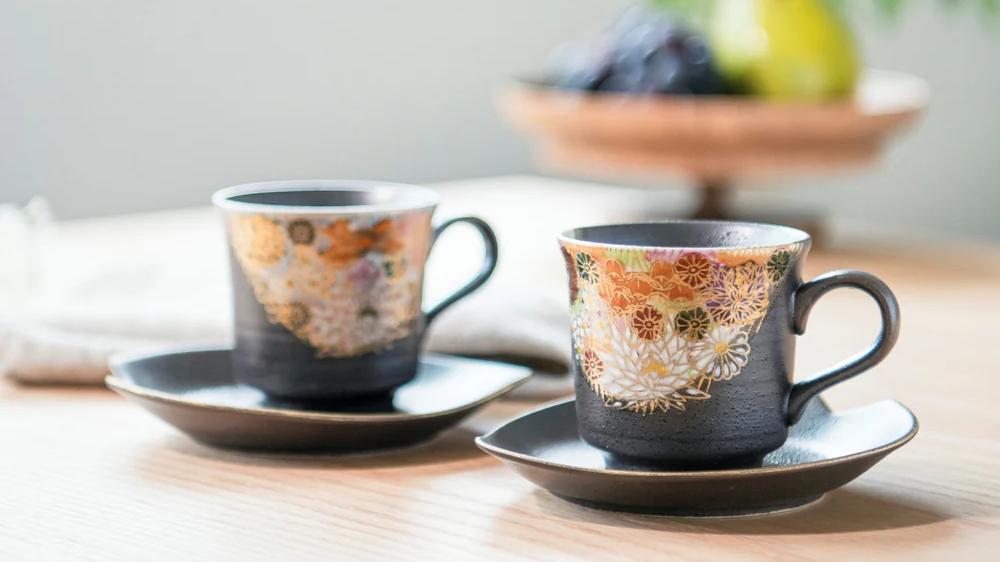
Sakura
From our Japanese tableware and dinnerware collection, we have gathered items with cherry blossom motifs that show the beauty of Japan. We hope you will welcome these pieces, which are loved by people of all ages and regions, into your home.
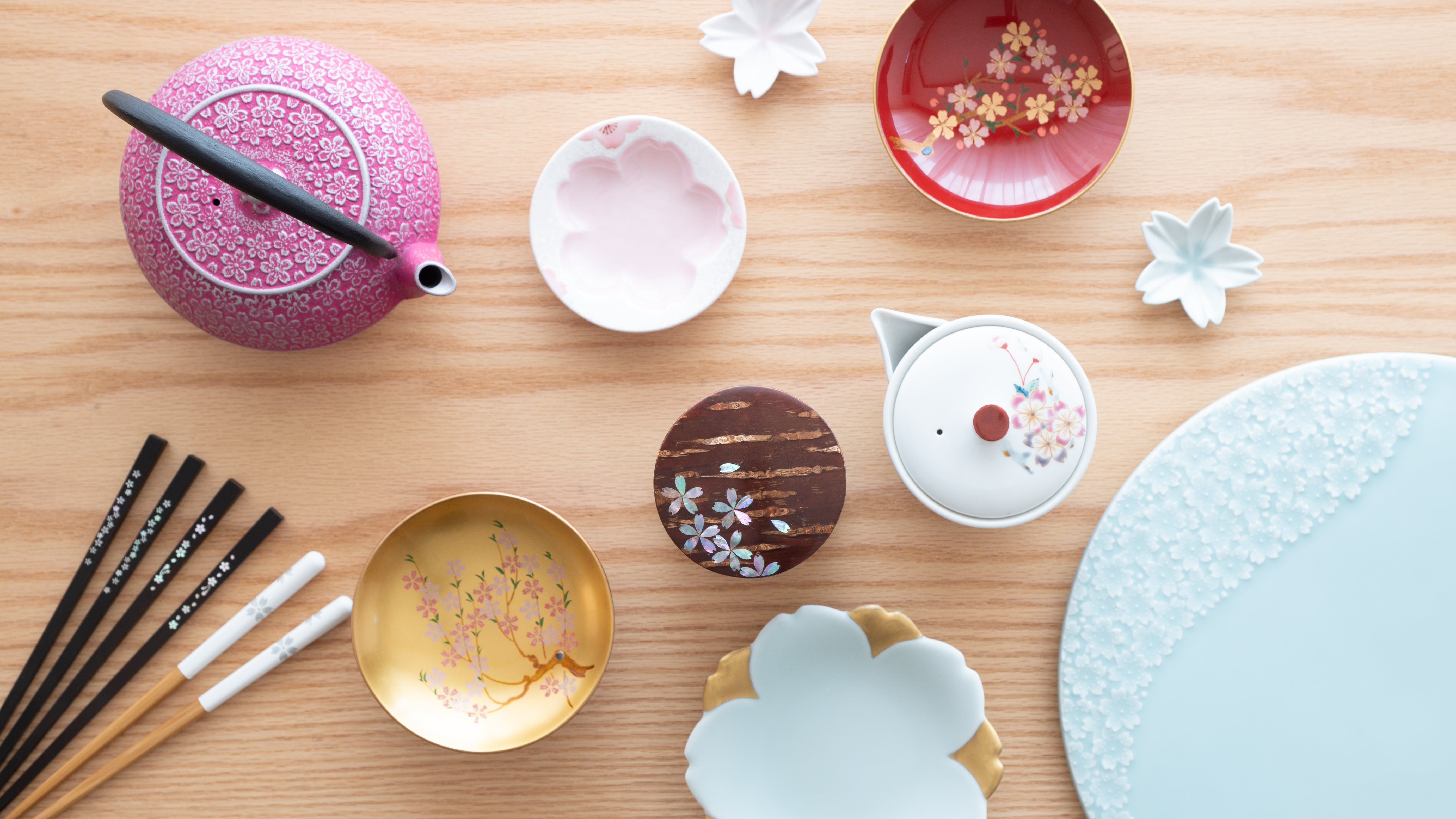
Guide to Flowers in a Japanese Climate



